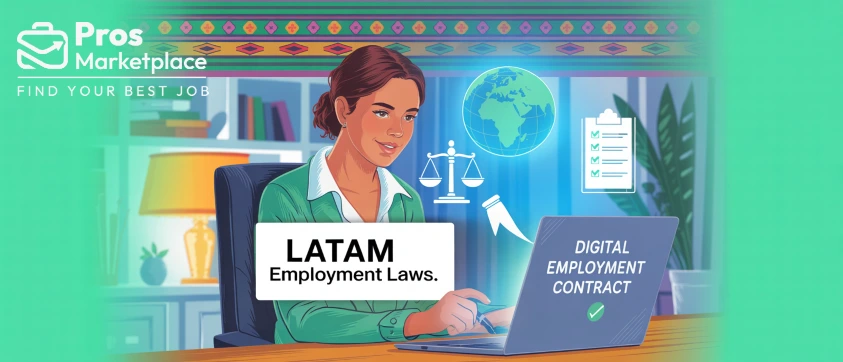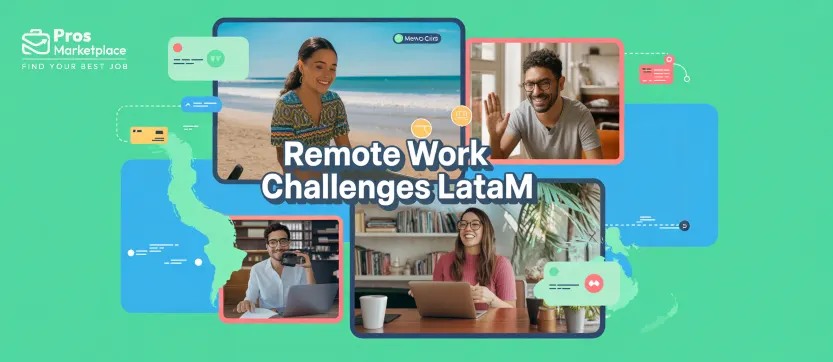If you are looking to hire full or part-time employees to join your remote team and you are starting to jot down your job description, remember that attracting quality candidates starts with a stellar job posting.
Writing a job posting is a lot like marketing your business. In both cases, you are trying to reach your target audience and encourage them to interact with you.
You might’ve heard that people buy on emotion first, and then rationalize their purchases using logic.
Applying for a job is a lot like making a purchase. Clicking the “APPLY NOW” button is an emotionally charged decision.
So, how do you grab the attention of the candidates you want to attract?
Step 1. Get to know them
When writing a job posting, tap into emotions by learning everything you can about your target candidates. What are their professional goals? What are their aspirations? What makes them happy?
Getting to know your target audience will help you reach the right candidates and is the starting point to create a great job description.
Just as you would create a buyer persona to define the target customers for your product or service, create one for your ideal remote worker.
A fictional character, whom you shape with bits of information like experience, education level, skills, certifications, and even a name and personality traits. This helps you conceptualize and “talk to” the candidates that apply to your job post.
Step 2. Know what you are looking for
Before you post a job on our site and you start to craft a job description, be sure you know what you need.
Knowing what you are looking for (and what you’d like to avoid) makes the search more targeted and the filtering process more streamlined.
This step is very important and will require some forethought and investigation on your part but be sure to do your research regarding the skill set, education and experience level you may need remote workers to have.
Define what you need before you even begin writing your job description.
Step 3. Headlines matter!
Take the time to create a click-worthy job title that is clear and also conveys something interesting about the position.
Job titles have a big impact on whether qualified candidates will read or apply to your open roles. So remember this when you’re writing a job posting.

Step 4. Start with a (brief!) background of your company
A good company description is your first opportunity to make a great impression on new candidates.
In two concise but strong paragraphs, cover the basics of your company. But don’t simply copy-paste your business’s “About Us” boilerplate description into your job listing. Your “Company Summary” should help to put the job for which you’re hiring into context for the applicants.
This step will require a bit of a balancing act. You want to share the values and principles of your company while providing some insight into how your company functions.
However, you don’t want to overload candidates with too much information about your company.
Step 5. List the Benefits
You would normally add benefits at the end of your job description but is a good idea, now that you have the candidate’s attention, to draw him or her deeper into the ad with a section dedicated to the benefits.
Use this section to give the perks that come with the job (compensation for reaching targets, paid holidays, learning, growth and development opportunities, extra bonuses given at Christmas, for example…).
The benefits are often one of the most significant driving factors for a company if they are interesting, especially bonuses, as they can often increase a salary considerably and are very attractive to potential recruits.
This is your chance to wow candidates and you should motivate them to apply by presenting a great list of benefits.
Step 6. Explain your Requirements and Expectations
Responsibilities and duties are essential for remote workers to understand the role. They also set expectations and can be used as a baseline for performance reviews down the line.
The detailed task list is perhaps the easiest approach and the more traditional way of describing job responsibilities.
To create the perfect task list for a job, you should go through a typical day on the job and write down the tasks that are performed.
But don’t hunt for unicorns! Some job postings describe a job with enough work for an entire team, and yet, one person is expected to do it all.
Don’t be that company! If your requirements are unrealistic, your recruitment won’t be successful. Job seekers will either think you don’t understand the workload or that you intend to work them to death and that you do not value your employees.

“Hey there, I am your dream marketing manager! But i am not looking for a job though”
Step 7. List Hard Skills and Soft Skills
These are usually presented as a list of the Hard Skills and Soft Skills a candidate needs to be considered for the role.
In a broad sense, hard skills may refer to proficiency in any complex task: fluency in a second language, knowledge of PhotoShop or PHP for example.
Soft skills are those that help with interpersonal issues. In other words, dealing with people. That might sound very general, and it is. Soft skills are notoriously difficult to define. But they include such areas as being able to clearly communicate, listen, be empathetic for example.
You can select a broad number of ¨Soft¨ and ¨Hard¨ skills from a dropdown menu when posting your job with us.
Step 8. Full-Time or Part-Time?
Decide, depending on your hiring needs, whether the job you are offering will be a full-time or part-time position.
Workers are considered to be part-time if they work 10 to 20 hours per week while full-time workers generally work 30 to 40 hours per week.

Also let candidates know if there are:
1- A start date. Let them know when they can expect to start if they are hired.
2- A trial period. Explain to candidates if they are expected to work for a trial period. Also, specify how long this period will be. PLEASE NOTE: during the trial period you should pay people for their time. Do not expect people to work for free just because you are promising them a full or part-time position. If you are averse to paying a person because you are not sure that they can do the job, then perhaps you need to interview another candidate who can demonstrate through their experience that they can do the tasks that you require.
Step 9. Compensation
Have you ever listed ‘NOT DISCLOSED’ in the salary section of a job ad because you simply have no idea what the salary range is?
Surprisingly, this happens quite often. So if you don’t know how much you should pay your new hire, then perhaps you should first do some research on salaries for that skill set. Latin American salaries are affordable when compared with the US and Europe or even some other countries such as the Philippines or India.
However, some employers don’t want to disclose the compensation for the position.
The question of whether or not to disclose salaries in job descriptions is one that generally sparks much debate.
We strongly recommend disclosing the monthly salary when posting a job on our website because you should take into consideration that 74% of job seekers expect to see salary on job descriptions, and 61% name compensation as the most important thing. Of course, you don’t want to hire somebody whose first concerns and questions are regarding salary but people want to know how your company compares to its competitors, and they certainly don’t want to spend a lot of time interviewing only to find that what you’re offering doesn’t meet their needs.
Extra Tips
-Average word count. It’s best to keep your job ad in the 500 and 750-word count range, but it’s okay to go a little over.
-Bullet points and formatting. Bullet points are easier to scan than long-form copy and are the preferred choice.

via GIPHY
Avoid corporate jargon. Be personal. Don’t feel that you always have to maintain a corporate tone. Be warm and friendly in how you describe what you are looking for your candidates to do. Spell out all acronyms and refer to processes and things as they are. Instead of this: “The ideal candidate excels in a fast-paced work environment.” say this: “You’ll love it when things get busy.”
Avoid Typos! You would disregard applicants with typos on their resumes and applications and candidates are no different. Remember to always run spell check and have someone else read your job description before posting it. A second set of eyes is often all it takes to spot errors or typos.
Final Comments
Hiring an excellent remote worker from Latin America or from anywhere else in the world depends on your ability to clearly and concisely let your potential new remote workers know what you need. If done correctly, the job description can weed out those who are not the best fit and attract those who are going to be the right person for the job.
Good Luck and Happy Hirings…







